Music Skills
Key Words
- Rhythm
- Timbre and Pitch
- Dynamics et Intensity
- Synchronization
- Sing and Dance
- Musicality
- Auditory Discrimination

A child’s first experience of rhythm occurs through language. Our activities bring awareness to accented syllables, and subsequently to musical accents. Basic musical concepts are explored in a playful way. The majority of our activities include synchronizing gestures with sound and/or pairing song lyrics with different movements.
Children gain familiarity with abstract musical concepts through concrete physical experience.
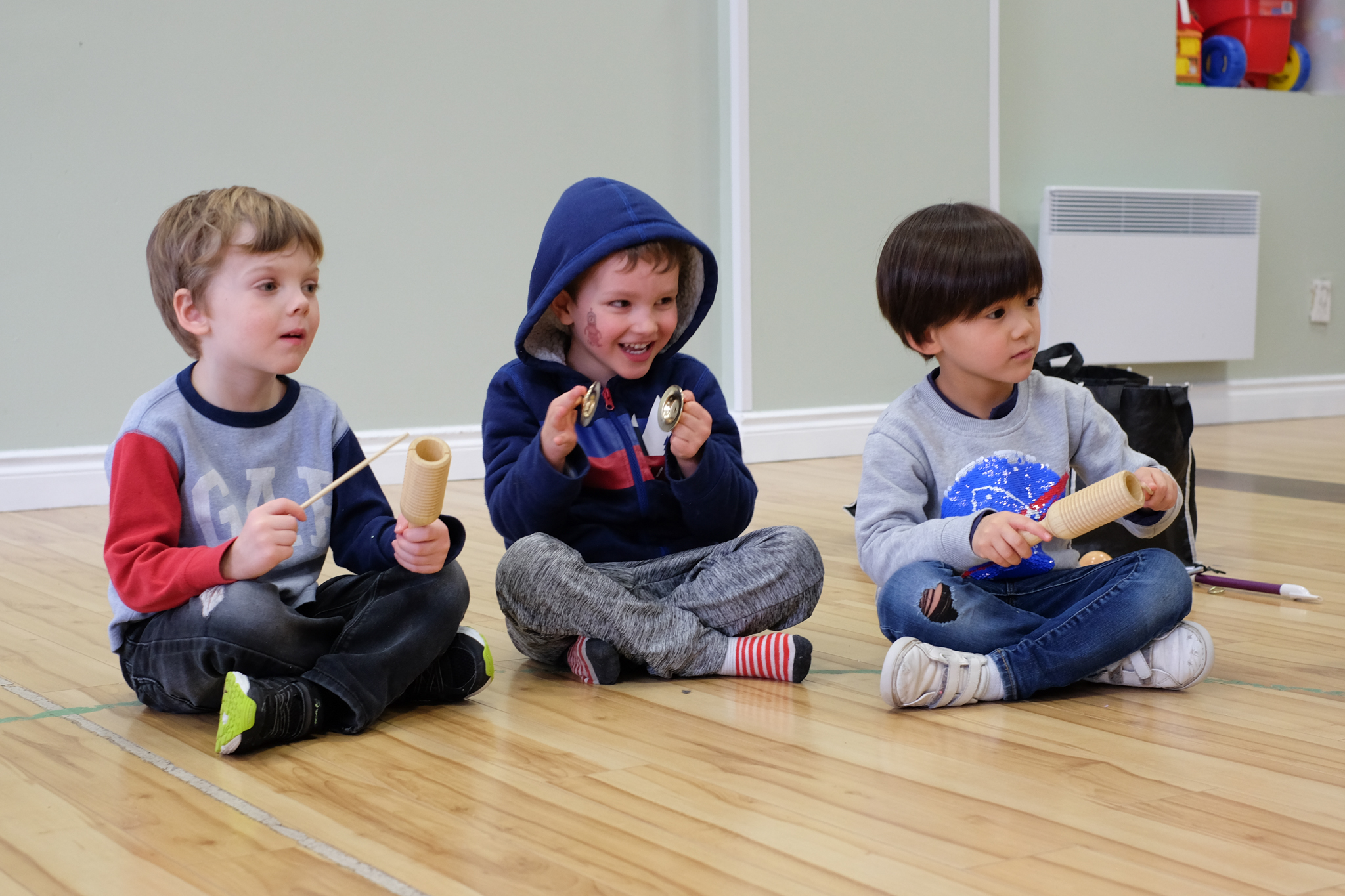
Our program enriches musical knowledge by including culturally diverse material. We include classical and contemporary styles in order to expose participants to a variety of material while encouraging them to express themselves by using their voice and body.
We want children to have fun while they learn, and music facilitates the process by letting then explore their inner rhythm, musicality and creativity in a natural way.
Movement
Key Words
- Gross and Fine Motor Skills
- Vestibular System (balance)
- Embodied Expression
- Coordination
- Body Awareness
- Precision and Repetition
Movement is essential for development and successful learning in young children. The more they move, the more neuronal connections are forged. They gain strength and confidence which primes them for learning. Rhythmic movements enhance control and organization.
Performing movement with precision promotes clear thinking and speech.
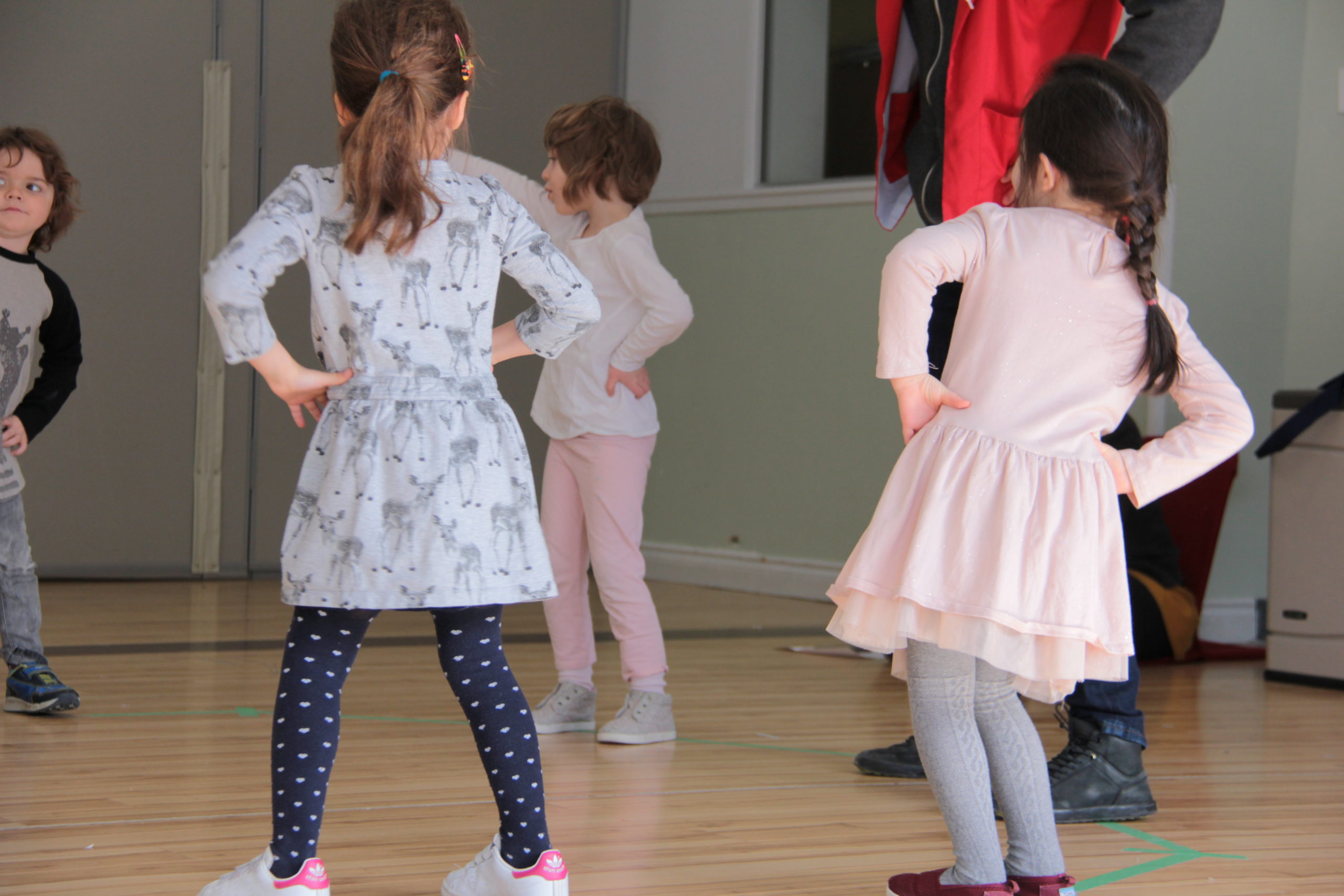
This program stimulates bodily awareness and encourages children to become conscious of themselves, their relationship to others, and to their surroundings.
We draw their attention to different parts of the body to help them discover the motor, rhythmic, and expressive potential of each one.
Our activities promote coordination, dexterity, and bodily expression. They also encourage maturation of the vestibular system, which contributes to improving physical and emotional balance (stability, feelings of calm and self-confidence). It also plays a fundamental role in children’s ability to pay attention, listen, comprehend, and control eye movements.
During our classes, children jump, walk, sway, crawl on all fours, spin, move in and out of a crouched position, explore different parts of the body, play instruments and manipulate a variety of props. All movements follow the pulse of different musical pieces, which helps the motions become conscious and intentional.
Language
Key Words
- Diction
- Gestural Communication
- Phonological Awareness
- Auditory Memory
- Auditory Discrimination
- Speech and imitation of sounds
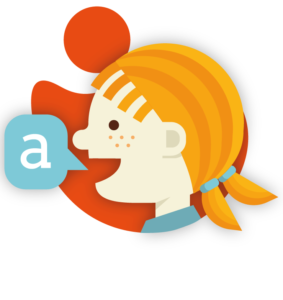
We explore language through music while introducing elementary elements of reading and writing. Music and language are complementary because they are both experienced with the sense of sound. Children gain awareness of rhythm through accented words and syllables, and the rhythm of song lyrics introduces them to musical accents. Music enhances linguistic mastery in children.
Awareness of the rhythm in language primes children for the acquisition of strong reading and writing skills.
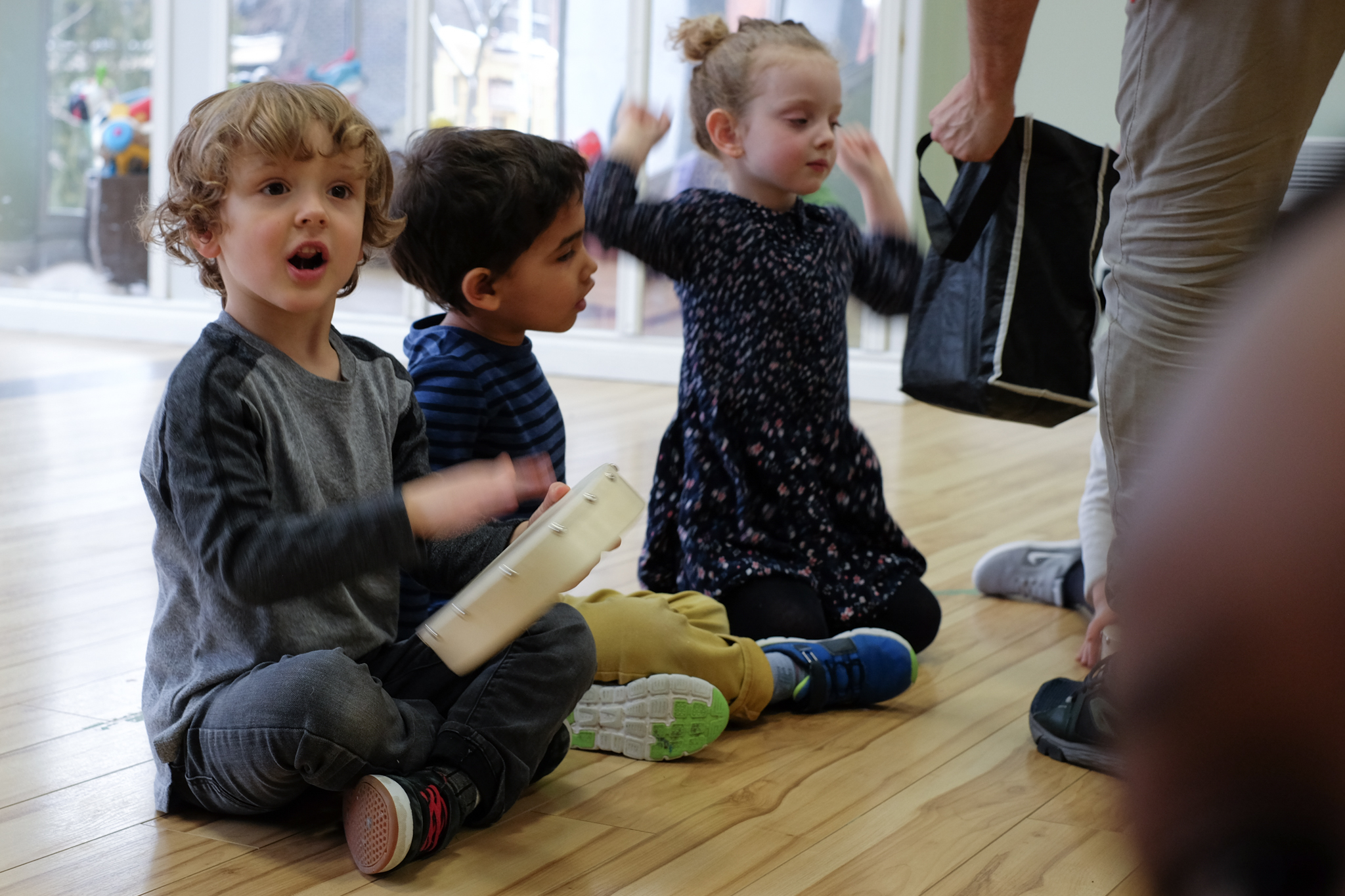
We include exercises in auditory discrimination to improve their capacity to differentiate between pitches, levels of intensity, timbre of phonemes, phrases, and similar words. We also challenge auditory memory, a skill which enriches language skills by consolidating knowledge and recognition of phonemes. We encourage phonological awareness, which helps children to identify the individual sounds that make up words, and to reuse them in oral communication.
Our musical activities teach language in a natural way. Thanks to simple but playful lyrics which are easy to remember and repeat, the children sing and develop their vocabulary. We include phonemes which have a positive effect on mood and mindset. Some activities emphasize the creative and healing properties of particular vowels and consonants.
This musical experience prioritizes phonetic development, and the skills learned give children a head start on learning to read and write.
Cognition
Key Words
- Attention
- Memory
- Logic
- Mathematics
- Abstract Thinking
- Imagination
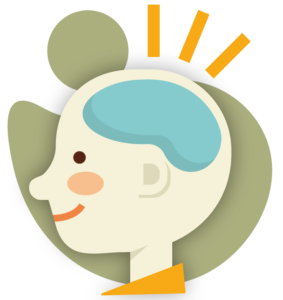
Learning music provides an excellent challenge for the brain. New neural connections are created and reinforced, enhancing pathways throughout the nervous system.
Memory and executive function are stimulated through the process of listening and imitating sounds, a process undertaken each time the children sing or repeat phonemes.
By participation in this musical experience, children assimilate information through all of their senses. This enhances their ability to evaluate new information from many different perspectives.
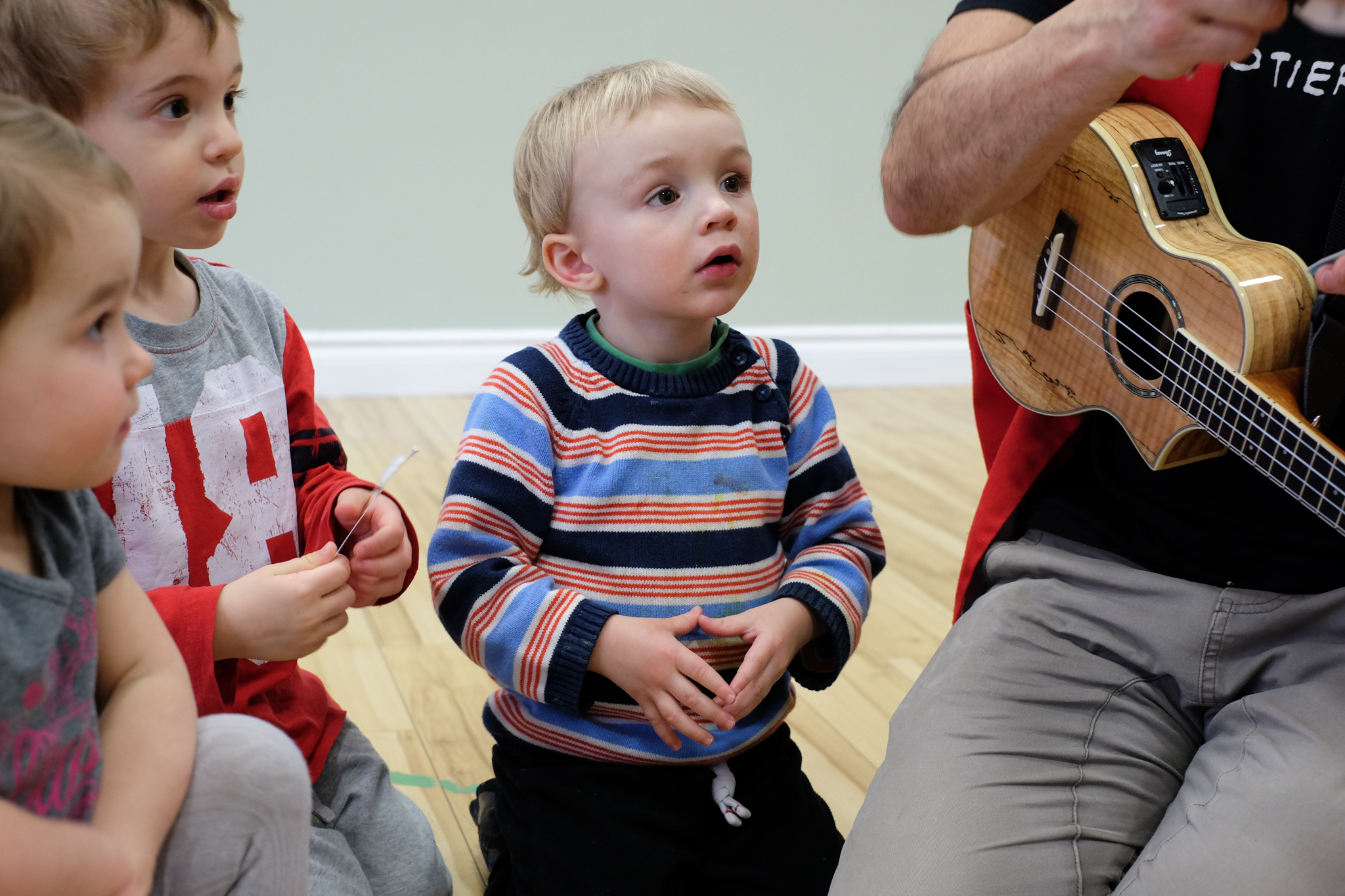
“Not only does music give our children a way to speak without words and feel the order of patterns without number, it can lead them to greater understanding of both words and numbers”. Goodkin,D.
This program enhances cognitive abilities such as planning, organization, and imagination, all of which contribute to a love of learning. Our approach,which favours active learning and stimulates all the senses, improves children's attention span and powers of observation. All of the skills our program teaches encourage children's creativity.
Key Words
- Sense of Community
- Social Interaction
- Naming of emotions
- Self-control
- Motivation
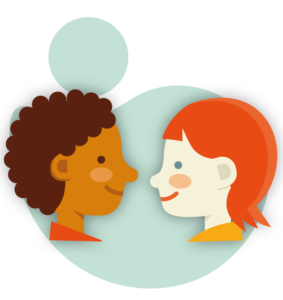
We design activities appropriate to each stage of development in order to promote self-confidence and cultivate a sense of accomplishment. Our program is inclusive and open to all. Each child progresses at their own pace and according to their abilities. There is no right or wrong way to participate. Each child will grasp the musical concepts in keeping with their stage of development.
Furthermore, we explore emotions through specific activities which feature characters in nursery rhymes or stories.
This program was conceived to be experienced in family or in a group setting in order to provide opportunities for social connection in children's lives. It is designed so that each child feels recognized and important.
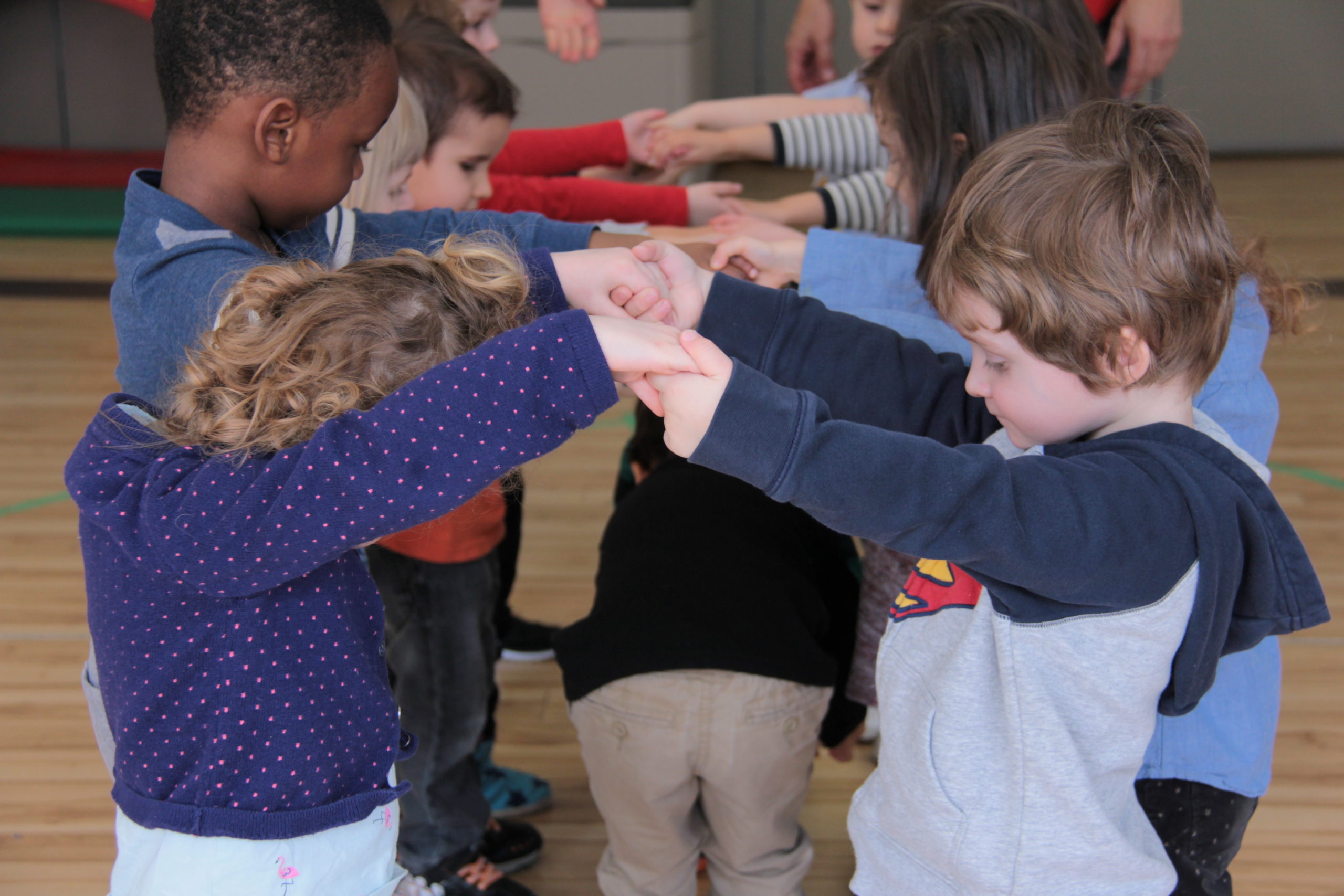
The communal nature of the activities bestows children with a sense of belonging while they learn to wait their turn, follow instructions, share space and attention, and listen to others. The adult plays an integral role in motivating and maintaining children's interest so as to provide them with the most enriching and rewarding musical experience possible.
Social-emotional development is essential to the cognitive development in children and greatly impacts academic success.
Sensory Development
Key Words
- The 5 senses
- Touch
- Feelings of security and self-confidence
- Body Awareness
- Acknowledgement of others
- Creativity

Understanding and responding to sensory stimulation is an essential aspect development in all children. It greatly impacts their ability to relate to and interact with their surroundings.
Sensory development occurs across all 5 senses: sight, sound, taste, smell, and touch. The sense of touch is the first path of understanding which allows infants to become aware of themselves and others. Being touched brings feelings of safety and security which positively impact behaviour and learning. Sensory and motor development prepares children for more complex cognitive tasks such as reading and writing as they approach school age.
Familiarity and acceptance of bodily sensations allows children to fully understand their perceptions and to respond in adaptive ways.
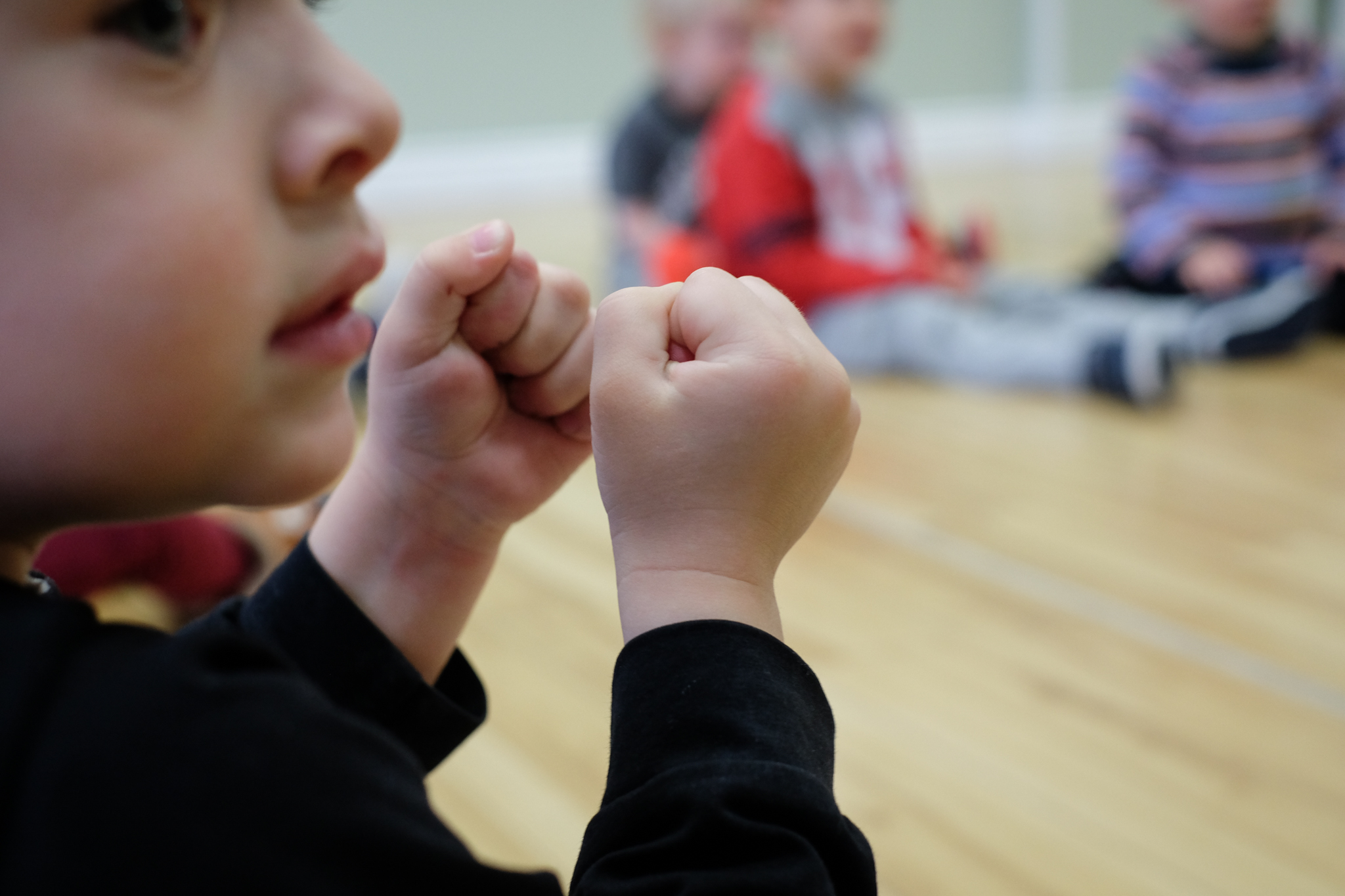
During the course of this musical experience, we encourage self-awareness in a variety of ways: doing the activities in socks or bare feet, handling props and/or musical instruments, making eye contact, improving eye-hand coordination, and lying down to access new movements and sensations.
Children are encouraged to discover their creative potential, which is stimulated by reflecting on the sounds and textures of various instruments, dancing to different rhythms, or role-playing (walking like a giant, swimming like a fish, becoming a carpenter, etc.)
Laterality
Key Words
- Midline
- Dominant Side
- Midline Crossing
- Bilateral Integration
- Spatial Orientation
- Symetrical Movements
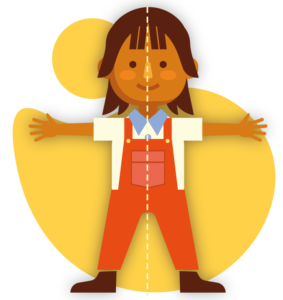
When we are born, the brain has two distinct hemispheres: right and left. They are joined by the corpus callosum, which allows communication between the two hemispheres. This division extends through the rest of the body and is referred to as the midline.
The successful completion of an activity may call upon areas of the brain which respond to emotional stimuli as well as those involved in reasoning. Likewise, the capacity for creative and logical-mathematical thought as well as the ability to use visual or spatial imagery improve as participants grasp concepts in complementary ways.
Bilateral integration is achieved when both sides of the body are used simultaneously to complete a task efficiently. The midline disappears at about 5 years of age. By practising movements which cross the vertical midline, we promote improved coordination between the arms and legs. This line of separation disappears at about 4 years of age.
Learning is facilitated when both hemispheres of the brain are stimulated and cooperate.
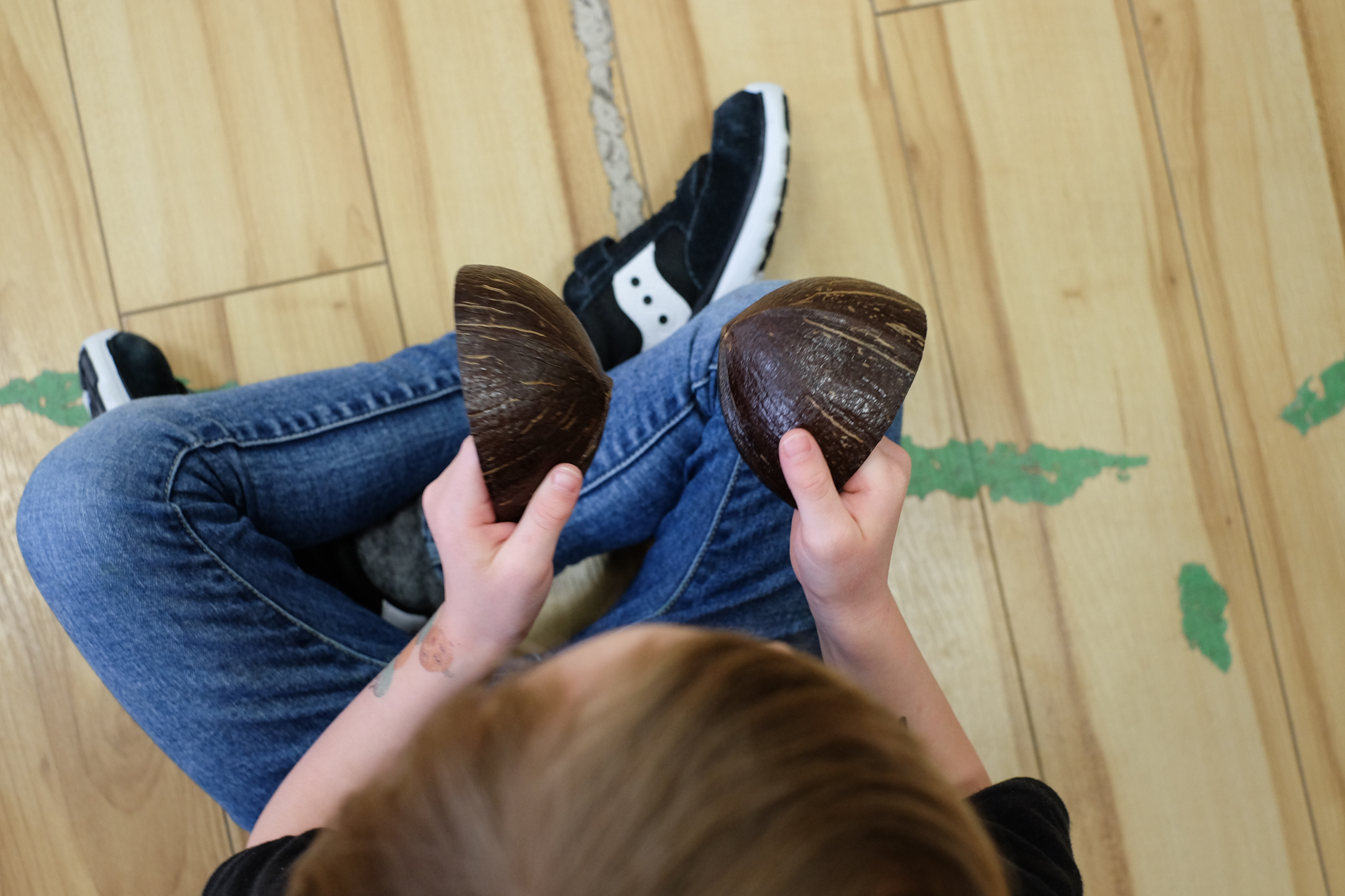
Laterality is essential in order to master reading and writing because it allows us to recognize the shapes which make up letters and numbers as well as the direction of writing. It also contributes to good posture. In short, laterality facilitates learning and coordination.
Our program includes simultaneous symmetrical movements to be performed on both sides of the body. These motions help to streamline communication between the two hemispheres of the brain. We include activities which improve awareness of the transverse plane, such as bending over from the waist.
Midline Crossing Movements provide clues as to the level of laterality in children, challenges their concentration, and helps them to be more centred and balanced.
Primitive Reflexes
Mots clés
- Neurosensory Activities
- Muscular Coordination
- Conscious movement
- Safety, Security and Confidence
- Moro Reflex
- Fear Paralysis Reflex
- Tonic Neck Reflexes -Asymmetric and Symmetric
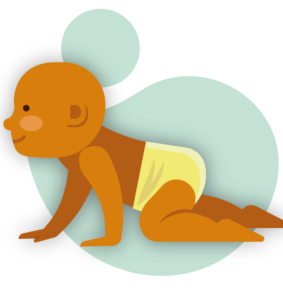
Primitive reflexes are involuntary movements which occur late in pregnancy, are present at birth and usually disppear before the end of the first year of life. They facilitate survival and are essential to the normal motor, neurological, cognitive, and emotional development of children.
The integration of the reflexes means children feel more in control of their bodies and as a result, experience higher self-esteem.
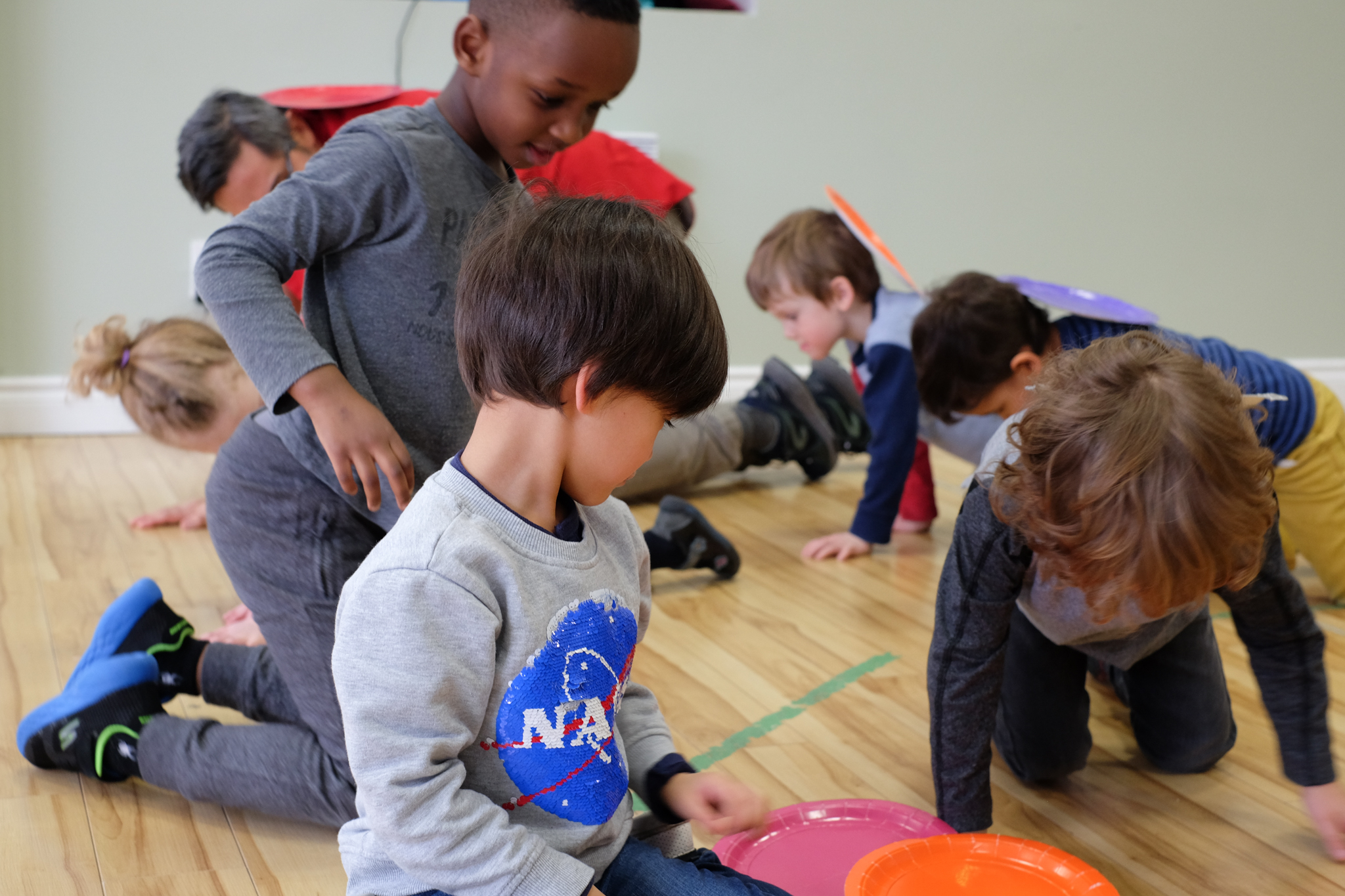
When these reflexes do not fully integrate, a child may experience a disruption or delay in the development of more advanced motor skills. This makes it less likely such children will achieve normal developmental milestones. In addition, when the Moro or Fear Paralysis reflexes are not fully integrated, children may experience states of heightened stress, anxiety, withdrawal or terror. These reflexes have a direct impact on emotional security.
Our program incorporates activities which promote the integration of primitive reflexes by stimulating the auditory, kinesthetic and vestibular systems. Singing and moving in synchronization helps to integrate the Moro Reflex. Furthermore, we include routines from Brain Gym® which feature movements from NGTI® especially conceived to promote integration of primitive reflexes.
REFERENCES
Bolduc, J. Effects of a music programme on kindergartners' phonological awareness skills 1. International Journal of Music Education 2009 27: 37 DOI: 10.1177/0255761408099063. Online version: http://ijm.sagepub.com/content/27/1/37
Bolduc, J. and Montésinos-Gelet. PITCH PROCESSING AND PHONOLOGICAL AWARENESS Psychomusicology; Spring 2005; 19, 1.
Chubarosky, T. Potencia el aprendizaje, la lectoescritura y el lenguaje con rimas con movimiento. https://www.tamarachubarosky.com/escuela-on-line/
Chubarosky, T. Bases para el aprendizaje infantil. 2021. https://www.tamarachubarosky.com/escuela-on-line/
Dempsey, M. Beyond the Sea Squirt. A Journey with Reflexes. RMTi - A Drug Free Approach to Postural, Learning, Sensory, Emotional and Behavioural Challenges.
Gazelle et Potiron. CADRE DE RÉFÉRENCE pour créer des environnements favorables à la saine alimentation, au jeu actif et au développement moteur en services de garde éducatifs à l’enfance. https://www.mfa.gouv.qc.ca/fr/publication/Documents/guide_gazelle_potiron.pdf
Goodkin, D. 1997. A Rhyme in Time, Rhythm, Speech activities and Improvisation for the Classroom. Alfred Publishing Co. 62 P
Programme éducatifs de services de garde du Québec. https://www.mfa.gouv.qc.ca/fr/publication/Documents/programme_educatif.pdf
Steele, CJ.; Bailey, JA.; Zatorre,RJ.; and Penhune VB. Early Musical Training and White-Matter Plasticity in the Corpus Callosum: Evidence for a Sensitive Period. The Journal of Neuroscience, January 16, 2013 • 33(3):1282–1290
Rockio Pepito. Neuro Gym Tonik. https://neurogymtonik.com





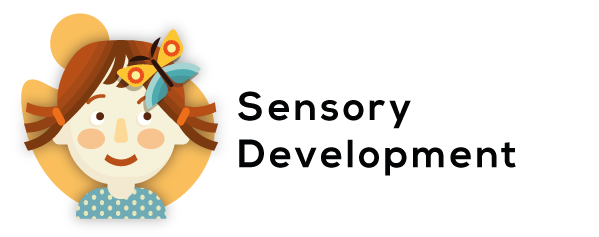


Social-Emotional Development